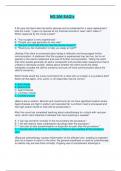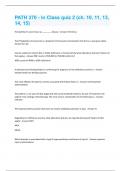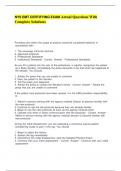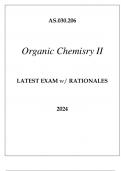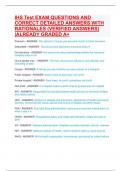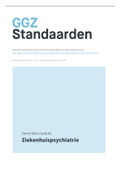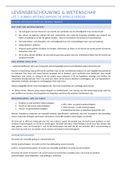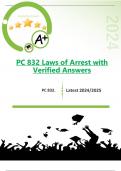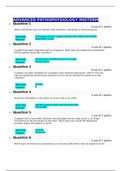Exam (elaborations)
NG 306 Adult Nursing | NG 306 EAQ's - Questions, Answers and Rationales
- Course
- Institution
NG 306 Adult Nursing | NG 306 EAQ's - Questions, Answers and Rationales A 50-year-old client who has aortic stenosis and is scheduled for a valve replacement tells the nurse, "I gave my spouse all my financial records in case I don't make it." Which response by the nurse is best? A. "Your surgeo...
[Show more]
